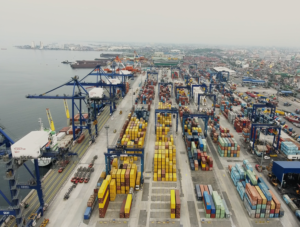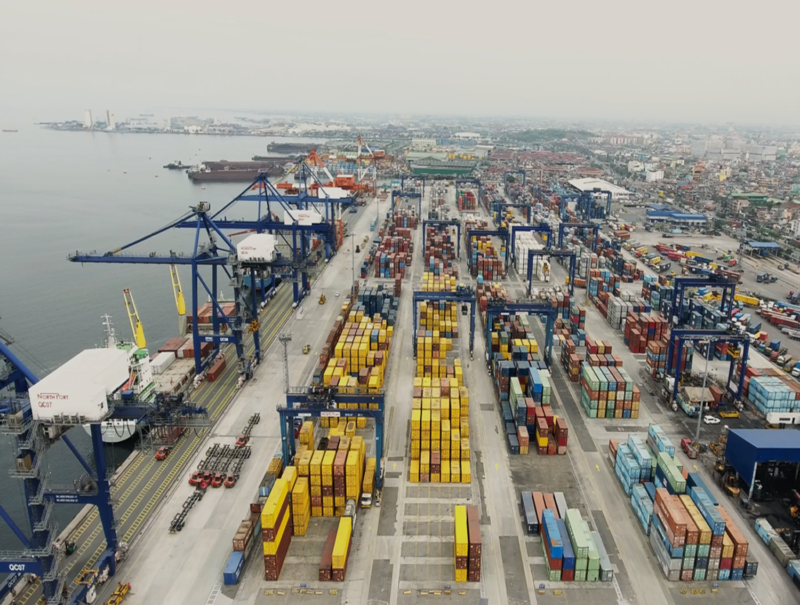
Domestic shipping lines are experiencing delays at North Port, the domestic terminal at Manila North Harbor, owing to fewer gangs servicing vessels and the implementation of community quarantine to stop the spread of the coronavirus disease (COVID-19).
If the situation is not addressed, port congestion could ensue, warned Philippine Liner Shipping Association (PLSA) president Mark Matthew Parco.
In an email to PortCalls, Parco said North Port operator Manila North Harbour Port, Inc. (MNHPI) has reduced the number of gangs at the port to ensure safety of their stevedores and in compliance with social distancing requirements, but this has resulted in delays.
A gang is a group of cargo workers employed by stevedoring companies to work the ships.
In late April, MNHPI reduced the number of gangs working at North Port to a maximum of 10 at any given time. The cut followed a steep decline in cargo volumes of as much as 70% due to a slowdown in business activities arising from quarantine restrictions, MNHPI general manager Romeo Salvador said in an April 23 letter to Philippine Ports Authority (PPA) Port Management Office-National Capital Region North Port manager Annie Lee Manese.
In an email to PortCalls on May 22, Salvador explained MNHPI deploys gangs based on requirement. MNHPI currently operates on a skeletal workforce due to community quarantine and physical distancing requirements aimed at containing the COVID-19 pandemic.
As of today (May 25), MNHPI is working with 11 to 12 gangs, Salvador told PortCalls in a follow-up email.
Asked if MNHPI will deploy more gangs once cargo volumes increase, he replied, “if more shows up, we can deploy more.”
The reduction in gangs has caused vessel queues of up to seven days according to shipping lines. While berths are available, they cannot be used due to the fewer gangs deployed.
(It must be noted there is no queuing at North Port’s quay crane berths, just in lift on/lift-off [LoLo] berths where PLSA-member ships usually operate.)
To remedy the situation, Salvador said MNHPI has recommended to PPA the use of quay cranes, noting this will also “effectively implement [physical distancing]… compared to the heavily manual vessel crane operations.”
Domestic shipping lines, however, predominantly operate ships fitted with their own gears that do not necessarily require the service of quay cranes. This means a preference for the status quo, with carriers docking at North Port’s LoLo berths attended to by gangs.
Parco acknowledges that the use of quay cranes “can improve productivity and ease the port congestion” but the situation would compel shipping lines to pass on the cranage cost—P1,600 per 20-foot container—to customers.
The PLSA chief said shipping lines need to conserve cash so they would rather go for the lowest cost option, which in this case is use of LoLo berths.
He noted lines need to ensure their operations are financially viable so they can continue serving the public, pointing out that domestic shipping has been the backbone of the national supply chain, relied upon for the transport of essential and non-essential goods.
“In an archipelagic country like the Philippines, sea transport is the most economical means of transporting passengers and cargo nationwide,” Parco said.
In the last two years, domestic container and roll-on/roll-off ships transported an average 1.4 million twenty-foot equivalent units valued at over P1.5 trillion per annum, he said.
About 60% of the total volume consisted of food, medicines, clothing and other products transported from the Manila port to Visayas and Mindanao. About 27% comprised critical inputs to food manufacturing like agricultural products, livestock, sugar, corn and bananas shipped to Manila from Visayas and Mindanao.
But with the COVID-19 pandemic and implementation of community quarantines, Parco said they project a 70% drop in cargo volumes.
RELATED: Domestic shipping sector fears collapse; cargo volumes down 50%, revenues by 80%
After the quarantines are lifted, estimates point to cargo traffic being only 50-70% of pre-COVID-19 levels.
Still, Parco said shipping lines “continue to serve the public even at a loss since we need to move food and essential goods to the different islands.”
He said this is why shipping lines have “no choice but to use LoLo berths to reduce cost which helps them to continue serving the public.”
Parco said PLSA members continue to dialogue with PPA and MNHPI “to find a solution that meets the distancing requirements and also the needs of the industry.”
“But we expect that there will be a cost to any solution,” he noted. “Communication is the key in solving any issue. We continue to dialogue with PPA and MNHPI to find the best solution to this issue.”
Salvador, for his part, said they “engage the shipping lines on a daily basis.”
Manese said her office has already submitted to the PPA general manager a report on the North Port situation. She gave no details but noted that as of May 22 only four vessels are in queue at North Port.
“I can say the issues raised have been addressed by MNHPI with the shipping lines,” she said. – Roumina Pablo





